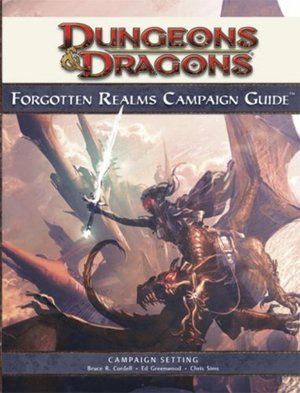
 As D&D has transformed with its 4th Edition, it should come as no surprise that its core setting, Ed Greenwood’s immortal Forgotten Realms setting, transformed along with it.
As D&D has transformed with its 4th Edition, it should come as no surprise that its core setting, Ed Greenwood’s immortal Forgotten Realms setting, transformed along with it.
What’s changed? A lot of stuff. In the hundred years since the previous edition of the setting, the goddess of magic Mystra has been killed, unleashing a horrendous Spellplague on the planet, transforming whole nations and altering creatures. In addition, parts of Toril have fused with its long-lost twin world Abeir, whisking away some countries and adding new ones. The Underdark is more open to the surface. Thay has become a nightmare land of death and the Elves, sensing the newfound connection to the Feywild, have returned to Faerûn in force.
That’s a lot of change, but probably necessary for a couple of reasons. First, they have to change a lot of stuff to get people to rebuy the product. That’s a cynical thing to say, but true — I could imagine people who’ve invested in previous versions not wanting to spend more on a new one, but the changes are so profound I couldn’t imagine people getting by with a canonical FR campaign without this book. A second, and more benign reason could be that certain changes to magic (in particular) and other game mechanics brought about by the new edition necessitate the transformation of the setting.
I’ll tell you what hasn’t changed, and that’s the basic spirit of D&D. When I cracked the book for the first time, I was gratified to see the first chapter covered Loudwater, a tiny hamlet that serves as the departure point for neophyte adventurers. How classic is that, a tiny town with a delver’s tavern filled with intrigue, rumor and level-appropriate threats? What a great way to introduce a new generation of gamers to the revamped setting. The Loudwater chapter also includes some easy encounters to help new players learn the combat system.
From there on the book explores the entire world, planes, the magic, gods, nations, the Underdark. There’s also a section covering Abeir, the mysterious twin world that has fused with Forgotten Realms’ Toril. Chapter 7 features a compelling subject, Threats — there can be no heroes without foes to fight. Included are classics like the Church of Bane, Cult of the Dragon, and Drow, along with some new ones (or new to me!) like the Five Companies, pirates sailing in flying ships. And we can’t forget Netheril, the lost empire that has unexpectedly returned after millennia of extinction. Less epically, dozens of new monsters are described in this section.
Nearly every aspect of the Realms has changed, and Wizards may be in an uncomfortable pickle with this product, where they strive to explain the epic transformations that have reshaped the world while covering enough to inform newcomers. Some readers complained that the book was too vague, but that seems reasonable to me — how could you thoroughly describe such a vast campaign setting in one book? Ultimately, the product succeeds at both entertaining old Forgotten Realms players while informing new ones.
Buy the Forgotten Realms Campaign Guide on Amazon. Also check out the Forgotten Realms Player’s Guide which details playing Realms characters.
![Reblog this post [with Zemanta]](http://img.zemanta.com/reblog_e.png?x-id=1d9f4827-4e43-4c8f-89f7-61467e3686e4)

